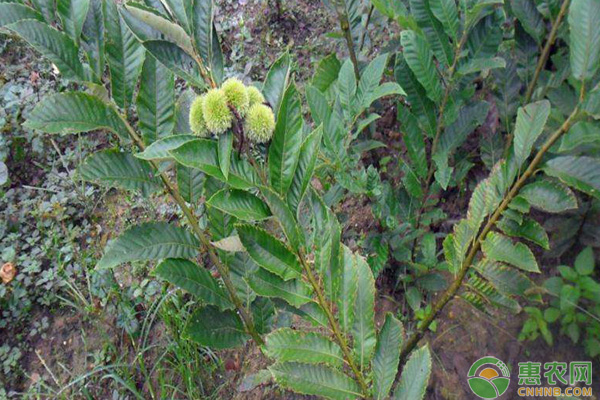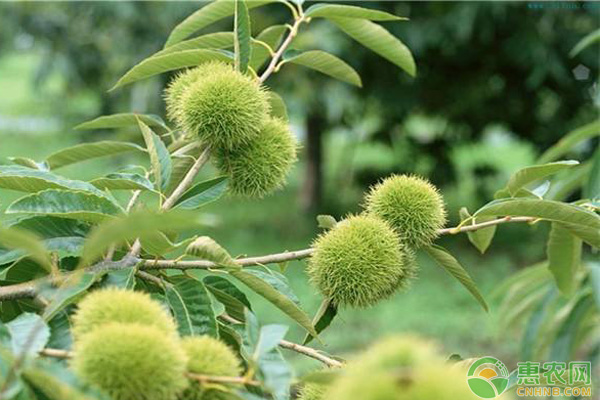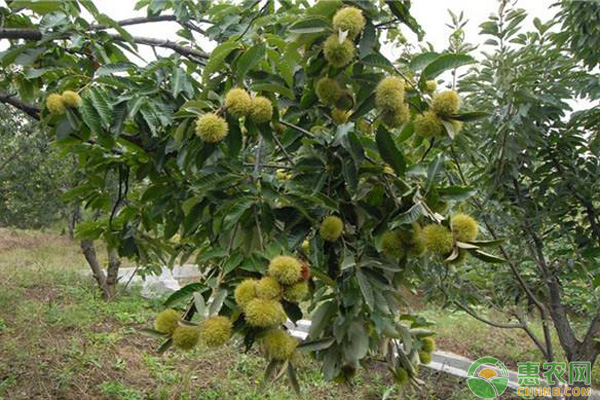Autumn is a good season to eat chestnut. Chestnut has a history of at least 2,500 years in China and is known as the "King of Dried Fruits". Chestnut has a rich nutritional value and can prevent and treat diseases such as hypertension, coronary heart disease and arteriosclerosis. It has the effect of strengthening the body and is suitable for many people.

In the process of planting chestnut, how to obtain high yield is a problem for every grower. The key to the high yield of chestnut is the management of saplings. How do you manage chestnut saplings? Then we will Let's take a look at the management techniques of chestnut saplings.
Technical points of management of chestnut saplings
1 rootstock culture
The garden should choose the soil with a pH value of 6.5~7.0 and good drainage. Planting in the first ten days of March, the plant spacing is 2m×2m, and the length, width and depth of the planting hole are 1m each. The 2-year-old first-class seedlings are selected. Dry, dry 50cm.
1.1 Foliar spray fertilizer and control of pests and diseases
After spreading the leaves, spray 0.4% urea + 0.3% potassium hydrogen phosphate, spray once every 10~15d, and spray 3~4 times. When the big gray elephant weevil occurs, put 0.5% trichlorfon poison bait around the trunk, the treatment rate can reach 100%, and in the second half of June, the red spider will spray 2000 times of avermectin solution.
1.2 pruning and topdressing
Choose three main branches with good azimuth angle, and the other branches are topped. In the middle of July, each plant applied 0.1 kg of ternary compound fertilizer, 25 cm from the trunk, and dug 2 holes of 20 cm each.

2 Management after the second year of planting
2.1 Winter shear fertilization
Leave 3 main branches per plant and leave no center dry. The main branch is more than 50cm, short at 50cm, and the excess branches are removed. From the beginning of March to the beginning of April, each plant applied 0.11kg of ternary compound fertilizer.
2.2 Summer shearing and topdressing
Beginning in early May, each main branch selects two side branches with good angles, and the rest are topped. In the first ten days of July, 0.1 kg of ternary compound fertilizer per plant was applied, and 0.4% urea + 0.3% potassium dihydrogen phosphate was sprayed every 15 days after the leaves were spread, and sprayed 4 to 5 times throughout the year.
3 Grafting and grafting management
3.1 Grafting
Grafting time is completed from pre-emergence to early germination. The scion is best grafted with the harvesting. It can also be preserved after the collection and stored in the spring. The method adopts the xylem-inlaid bud connection method, which is not affected by the rooting of the rootstock and the scion, and is firmly combined after grafting, which is beneficial to survival.
3.2 Management after grafting
After the grafting is completed, the chestnut should be painted once a week, and at the same time, the chestnut flower and the chestnut can be removed, which is beneficial to the growth of new branches after the nutrient is made. When the new shoot grows to 20cm, it is tied to the pillar to ensure graft survival and preservation rate.

The above is the management technology of chestnut saplings. In addition, we must strengthen the prevention and control of pests and diseases during the planting process, keep the orchard clean, and remove the residual diseased branches from the orchard in time to improve the maximum utilization of soil and light. This will ensure that the chestnut saplings thrive in a suitable environment.
Tuna Loin,Frozen Tuna Loin,Fresh Tuna Loin,Yellowfin Tuna Loin
ZHEJIANG RETRONX FOODSTUFF INDUSTRY CO.,LTD , https://www.retronxfoods.com